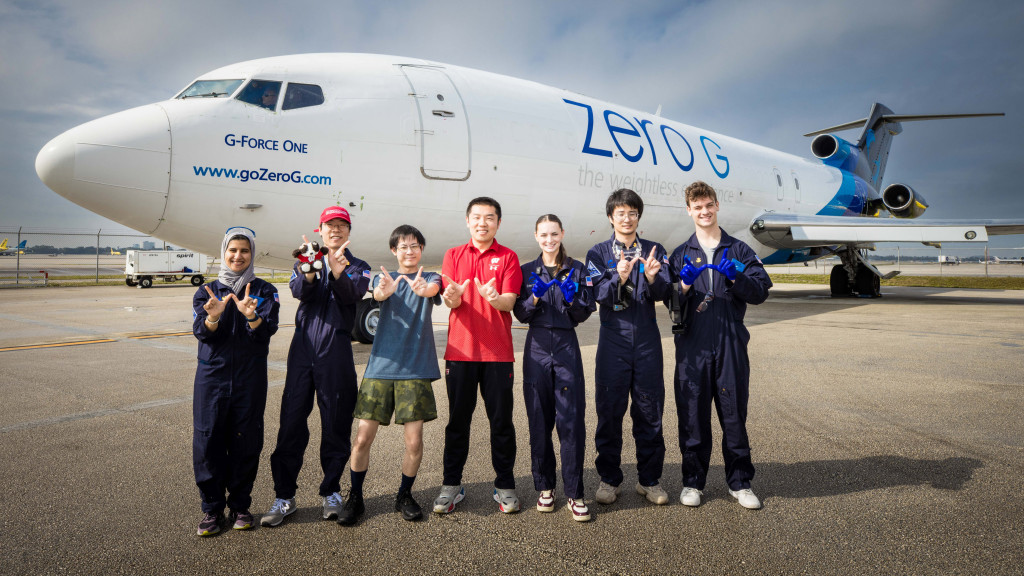University of Wisconsin–Madison Engineers Achieve Breakthrough in 3D Printing for Space Manufacturing

Researchers at the University of Wisconsin–Madison have achieved a significant milestone in in-space manufacturing by 3D printing RAM device units in zero gravity for the first time. Researchers posing beside G-Force One, the jet in which the testing was conducted. Photo: University of Wisconsin–Madison
In the future, as astronauts embark on long-distance space missions, the need for in-space manufacturing of replacement electronic components becomes crucial. To address this challenge, researchers at the University of Wisconsin–Madison have made progress by successfully 3D printing RAM device units in zero gravity.
This achievement by the UW–Madison team took place during a parabolic test flight at Fort Lauderdale-Hollywood International Airport in Florida in early March 2024.
Funded by NASA, the research led by UW Industrial and Systems Engineering Assistant Professor Hantang Qin aims to develop in-space manufacturing capabilities for electronic components like semiconductors, actuators, and sensors to enable repairs in space without relying on transporting replacement parts.
During the initial two parabolic test flights, the group encountered technical difficulties. However, after thorough troubleshooting in the days leading up to the third and final flight, the researchers identified and resolved the issues.
The team’s innovative 3D printing approach, electrohydrodynamic (EHD) printing, eliminates the need for gravity to extrude material and allows for precise control over droplet size. This technology offers advantages such as the ability to create nanoscale patterns, which traditional 3D printing methods cannot achieve.
After overcoming challenges with engine vibrations affecting the printer’s calibration sensors, the group successfully produced various units using EHD printing technology during their final test flight. The researchers plan to further develop their technology and aim to conduct tests aboard the International Space Station in the future.
For more details, you can access the source article.
This research was supported by NASA (award numbers 80MSFC23PA012 and 80NSSC2XK1188).





